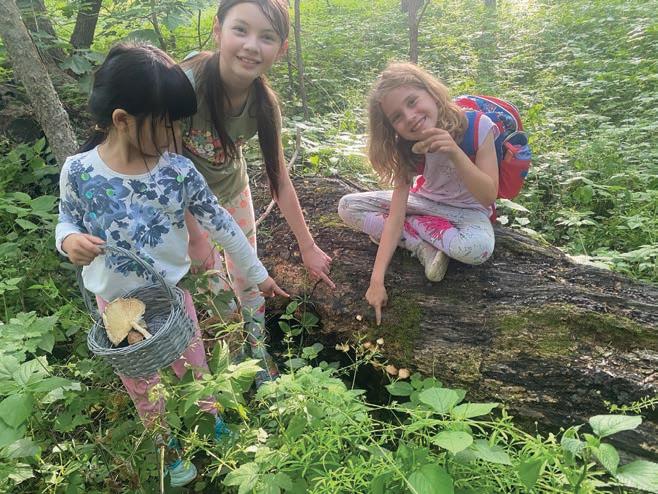
15 minute read
Updates & Stories
A Labor of Love Sees Permanent Protection
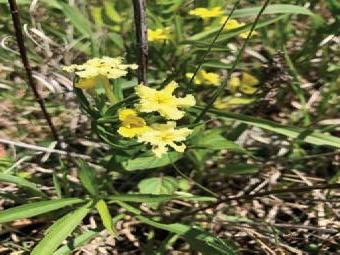
Advertisement
McFarland Park, Story County Conservation’s headquarters near Ames, will see a major addition in the not-so-distant future. The 127-acre property to the immediate south is destined to be transferred to SCC thanks to our neighbor’s vision for the future and our partnership with the Iowa Natural Heritage Foundation (INHF).
Bob and Carol Deppe have owned the property since 1974, during which time it has produced crops and served as the gathering site for many family picnics and outings. Soil conservation efforts like terraces and a Conservation Reserve Program (CRP) contract are evidence of the couple’s commitment to land stewardship. Between the prairie, timber, and small creek, it offers valuable habitat. Species like fringed puccoon and wild turkey call it home. “It really is a special spot,” remarked SCC Outreach Coordinator Erica Place. “The topography was unexpected. One particularly high hill gives a great vantage point.”
The couple knew SCC has been interested in the property for quite some time. “We’ve always looked across the road with a little bit of envy,” said SCC Director Michael Cox. “Between the proximity to the existing park, the improvements the Deppes have made, and the opportunity for permanent habitat protection, it’s just a natural addition to McFarland Park.” So when the Deppes were ready to sell their beloved property, they reached out to us.
The permanent protection of this property was made possible through INHF’s purchasing power and the Deppe’s generous donation of a portion of the land’s value. Stay tuned as we prepare to fund-raise for this spectacular new addition to McFarland Park.

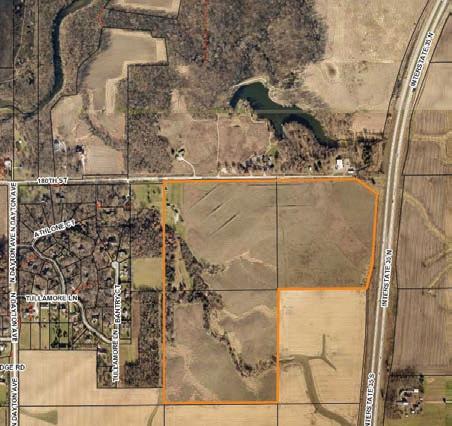

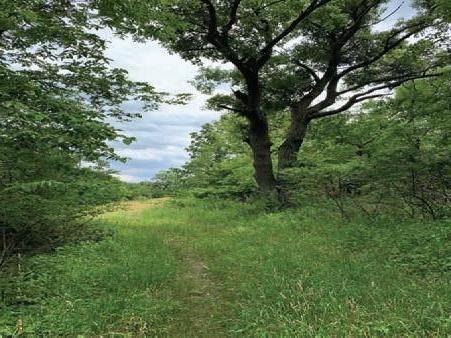

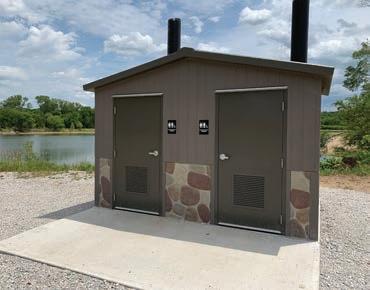
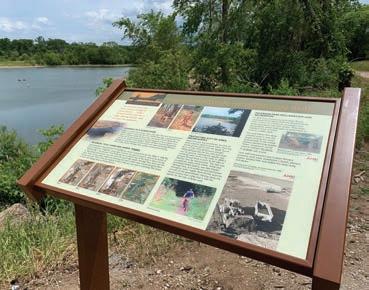
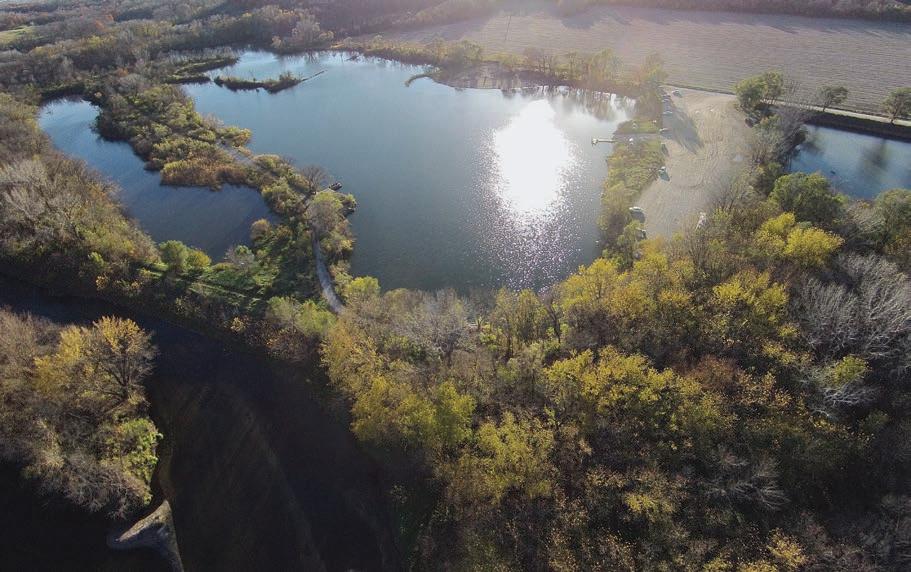
If you’ve made a recent visit to West Peterson Park north of Ames, you may have noticed some changes. And more changes are planned! Following direction from a public input survey several years ago, the planned improvements will help keep the park looking beautiful and up-to-date for all park users.
What already happened?
The parking lot renovation was one of the first updates to take place. Downsizing the parking lot created a large grass area for added recreational opportunities. Parking pylons now delineate parking spots to help with traffic flow. Perhaps the most anticipated change was the installation of an ADA-accessible vault toilet just off the parking lot. This has been on the wish list for a long time! Another new feature in the same area is a dock. The Connect-A-Dock style allows us to configure the shape (meaning much better access from both sides) and attach accessories where they are needed. The dock is free floating and able to rise and fall with the lake level.
What is going on now?
New entrance signs are currently in progress as we write this newsletter. The stone design will match recently installed entrance signs at Hickory Grove Park, Dakins Lake, and McFarland Park. Also in the works is a concrete sidewalk (marked in orange to the right) linking the vault toilet, boat ramp, and shelters together, providing easier access for all park users. Another accessibility improvement is new wayfinding signage throughout the park. Trails will be color coded on maps placed throughout the park, making identifying your location and desired trail routes easy. Interpretive panels will be installed by the time this newsletter reaches you. The park history and nature information, assembled by one of our outstanding naturalists, will add to the enjoyment of your walks.
What is going on in the future?
Expect some improvements at the beach: the addition of a retaining wall will address severe erosion issues and will create two tiers on the beach. Picnic tables and shade structures on the top tier will provide more areas to relax out of the sun. More fine sand will also be added along the lake shore for more comfortable recreation along the water.
We hope the improvements help put West Peterson Park on your rotation for nature outings. Please help us keep these new amenities in good shape, so they last long into the future. Dillon Schmidt
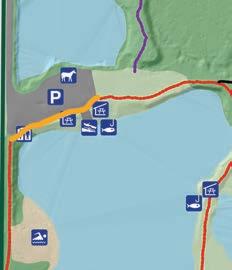
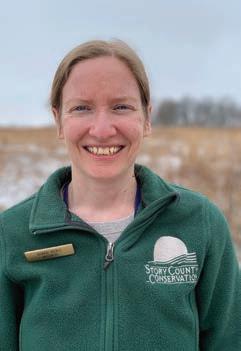

Rebekah Beall

Start the Conversation: The Legacy of Fabric
As the climate changes and we experience a warmer, wetter, wilder Midwest—more prone to extremes of drought, heat, and floods—I’m searching for the meaningful rhythms of nature I want to protect, examples of resiliency from my family’s past, and hopeful solutions for the future.
The patterns of winter are changing in Iowa, so I have the season on my mind. I picture my living room as a yellow glow, blinds shut against a frigid black night, the wind sanding my house with snow, and far above Orion sparking in the cold. My family survives the season with candles and strings of lights, cups of tea, and extra blankets.

Stored up in my closet are quilts my grandmothers pieced as warmth for winter, patched together from house dresses and old shirts. They stitched them by hand with the quilts spread across their knees, sandwiching the section of the fabric they were working into a hoop. Needle up, needle down, hundreds of stitches, thousands. Some were made for everyday need, layers against cold. Others were made to mark moments-births and weddings--stretched on frames in the church basement, the work of a community.
My family provided a legacy of fabric. When we unfold these quilts to wrap ourselves in warmth, we are reminded of labor, of art, of love — yes, all this. But here also is a lesson from my grandmothers for an era of climate change. It is not so much about the skill itself as the attitude toward the fabric. Each purchase of cloth involved a long-range vision. The fabric would have a life beyond the dress or shirt, used and worn, taken apart and pieced again. These quilts then passed through generations, some used until ragged, all treasured, none disposable. Imagine if we could adopt this long vision and apply it both as individuals and as a community. To see that what we build in our neighborhoods outlasts the short term. That every action on a community scale cycles down generations and aims for healing and restoration. We will need to change some expectations and stitch a new pattern from the old.
As humans we are skilled at future planning, and— although challenged by large-scale collective action (think global)—we are strong at community-scale execution of plans. We are social. When friends and neighbors see others adopting change in their town, they are more likely to join in. Research has shown practical community-scale action as among the most effective ways for progress in tackling climate change. Even those not motivated by climate change concerns often support moves toward renewable energy, biking and walking routes, community gardens, weatherization and insulation of buildings, and other positive, visible changes in their own communities. I find hope in this perspective when I consider facing a challenge that can feel overwhelming.

And this setting is also where stories are powerful. People are not as likely to be convinced by data or by fear. They are changed by connections with their friends, by conversations with their neighbors. It’s important we tell the story of change. We don’t have to have all the answers, but we do need to have the conversation.

Try This Now Individual action can give us a quick, positive boost as we work to slow climate change. • Use cloth napkins • Hang your laundry to dry • Buy used • Buy clothing that lasts • Buy sustainable fabrics • Learn a new fabric skill, anything from basic mending up to quilting 5

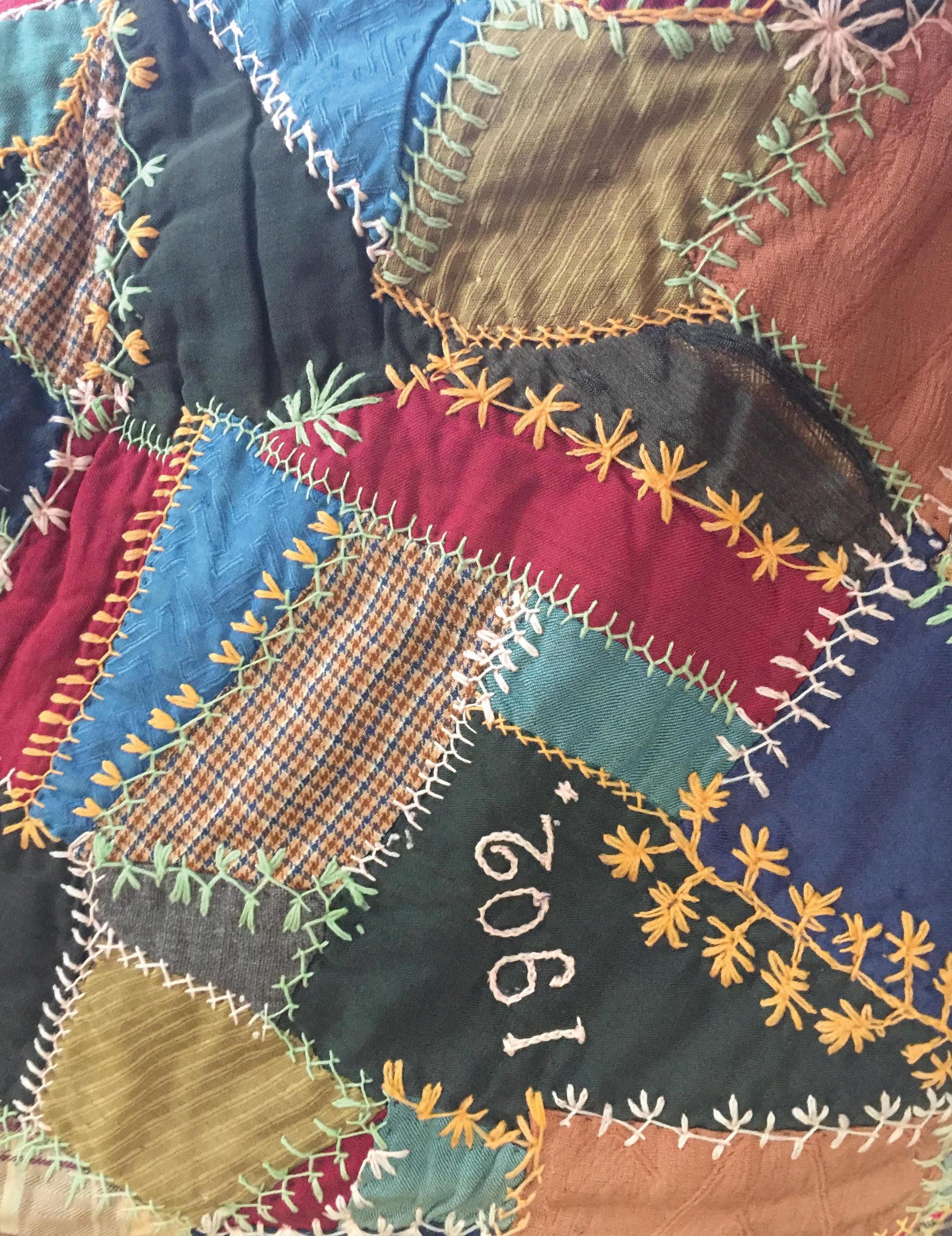
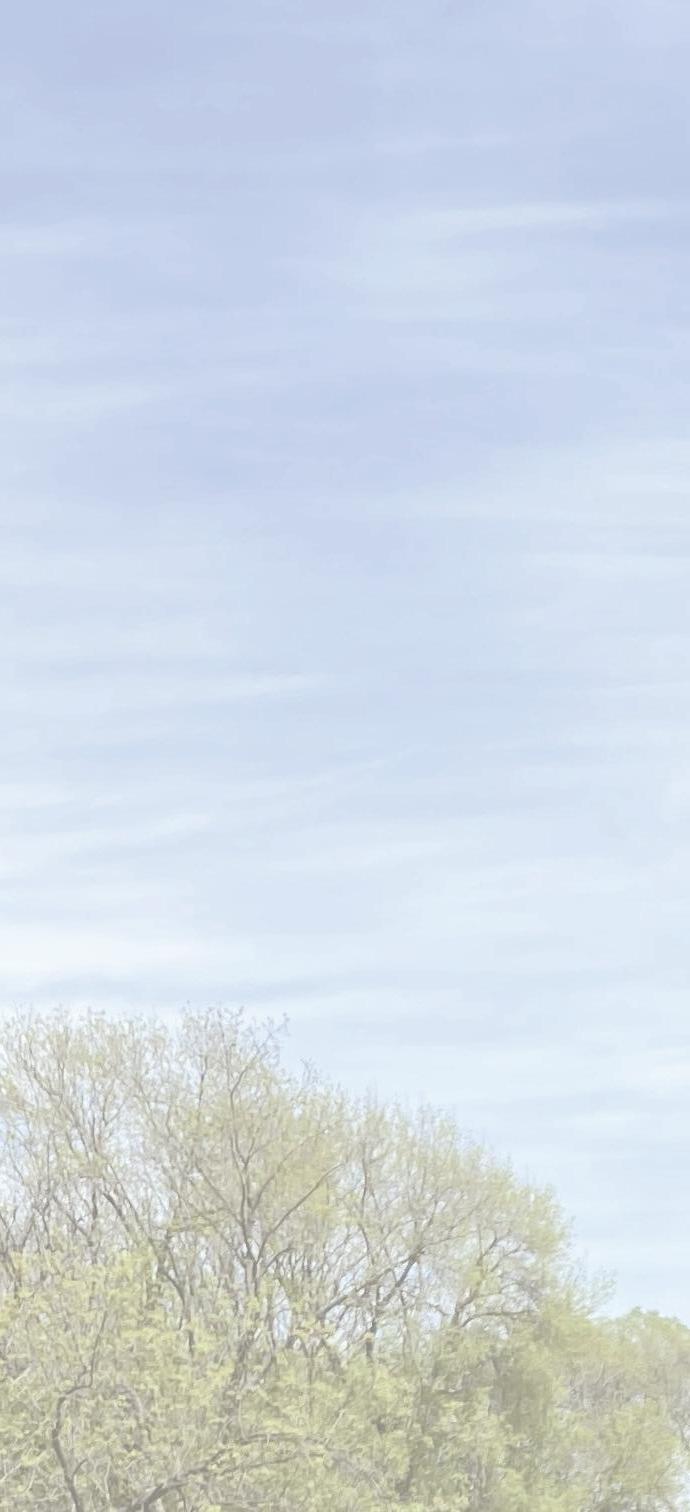
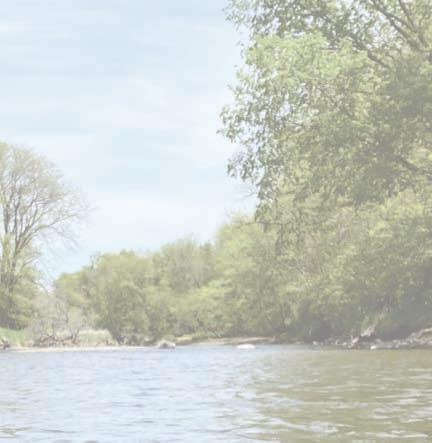
The 2017 countywide watershed assessment identified watershed specific goals and laid the framework for needed education, outreach, and water quality improvements. A working group was assembled to oversee the implementation of the outlined strategies. The working group is comprised of department heads or elected officials whose duties relate to water in some way, each with various tasks assigned from the implementation plan. Some updates on their efforts:
Water Quality Monitoring
Staff from SCC, City of Ames, Prairie Rivers of Iowa, along with volunteers are conducting regular water quality testing at 48 sites throughout the county. The data collected will create a critical record of water quality over time, making it possible to identify pollution problems that develop in the future, prioritize areas for water quality improvement practices, and become more competitive in grant applications. A big thanks to Renewable Energy Group for their $10,000 donation to this effort.
Watershed Management Authorities
A Watershed Management Authority (WMA) is a mechanism for cities, counties, Soil and Water Conservation Districts, and stakeholders to cooperatively engage in watershed planning and management. Story County is involved in Four Mile Creek WMA, Ioway Creek (formerly Squaw Creek) WMA, and the newly-created Headwaters of the Skunk River WMA.
Floodplain Management Ordinance
In 2019, the County increased the minimum elevation requirement for buildings in the Special Flood Hazard Area from 18 inches to three feet above the base flood elevation.
Story County participates in the National Flood Insurance Program (NFIP) Community Rating System, which recognizes and encourages floodplain management activities exceeding minimum NFIP standards. Story County entered the program in October at a Class 7 rating, resulting in a 15 percent discount on flood insurance premiums for residents in unincorporated areas of the County.
Floodplain Protection
Through partnership with the Iowa Natural Heritage Foundation and the Iowa Department of Natural Resources, over 1,000 acres of South Skunk River floodplain will be permanently protected and restored in coming years through grants.
Septic ordinance
A new ordinance effective January 1, 2021, requires that septic tanks be pumped at least every five years in an effort to prevent drain field 6 clogging and discharging to ditches, waterways, or the ground surface.
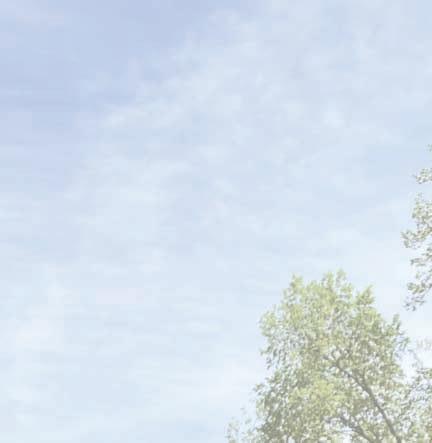
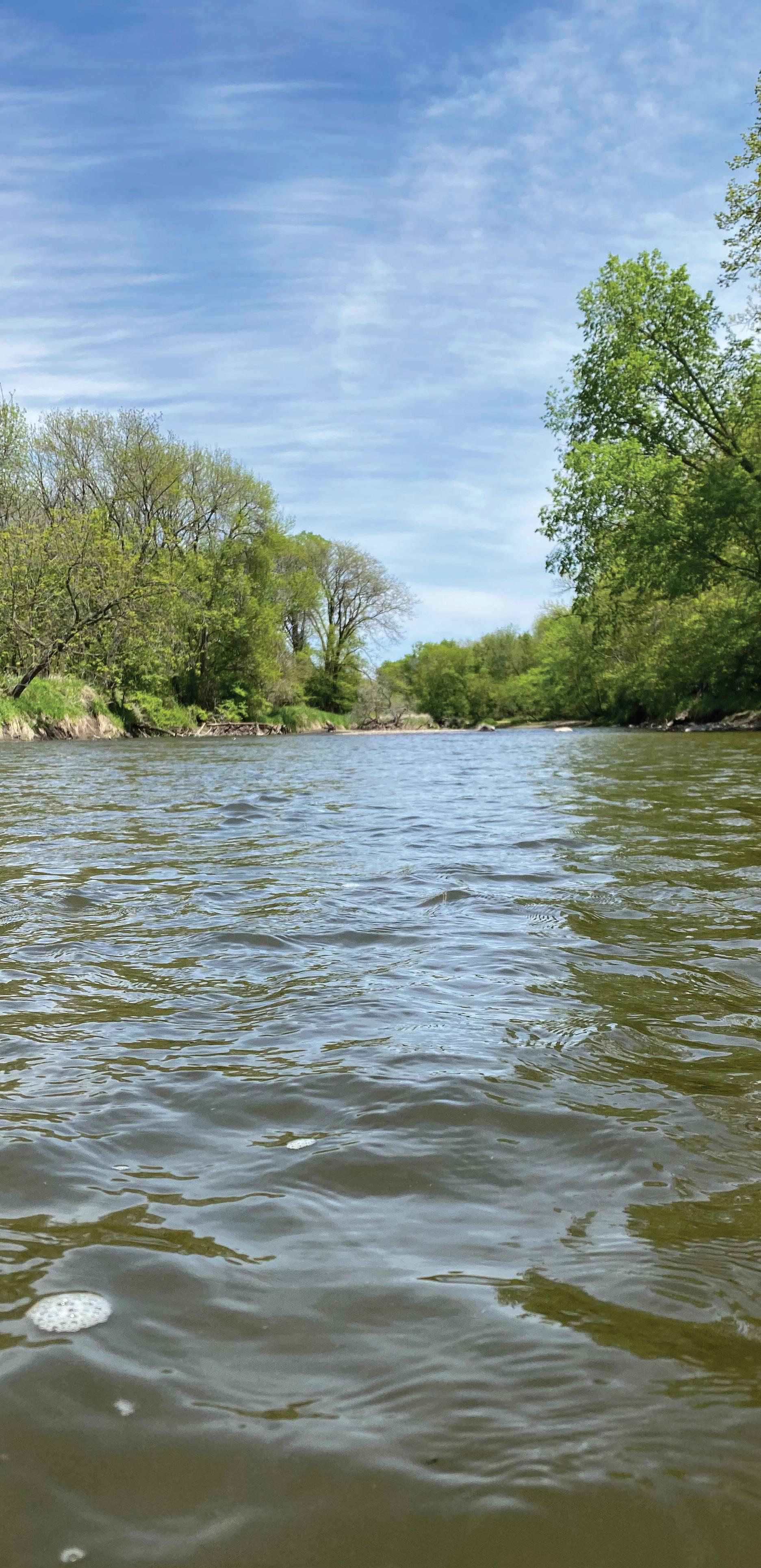
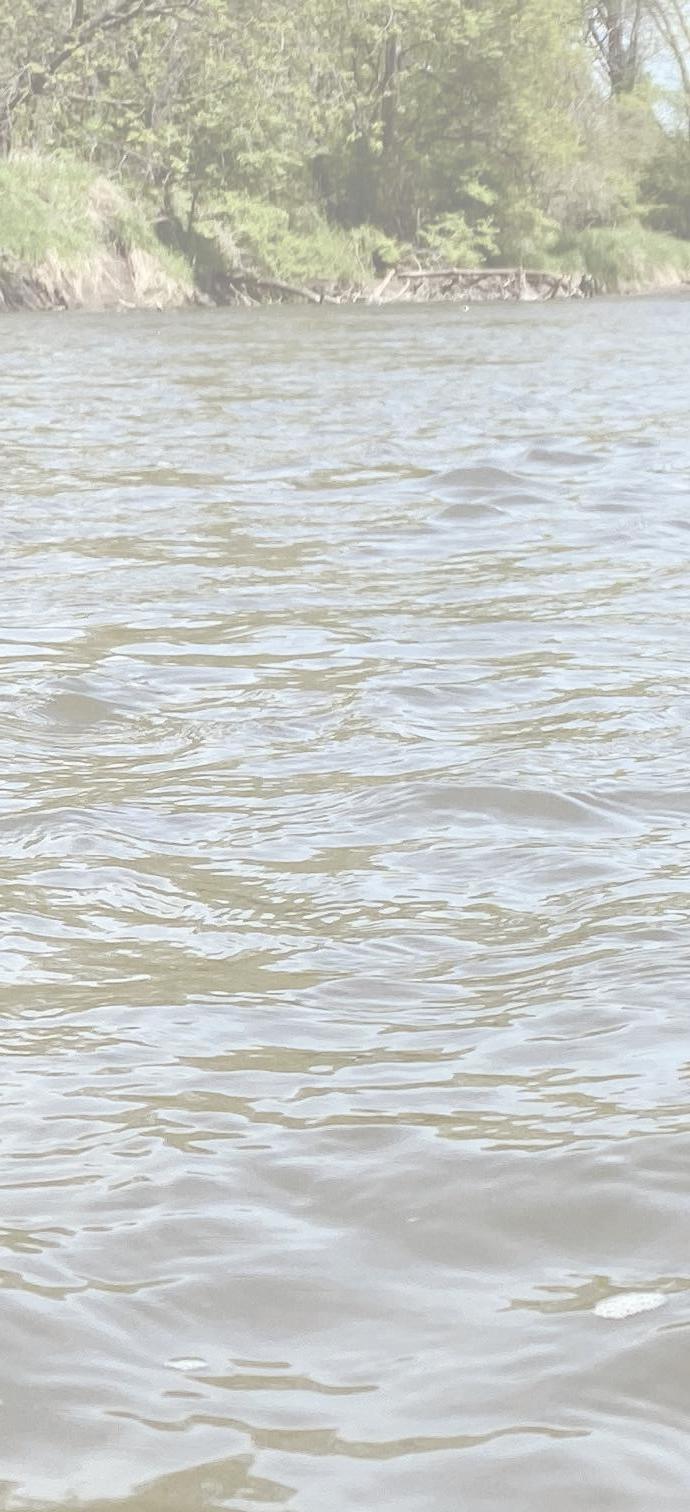
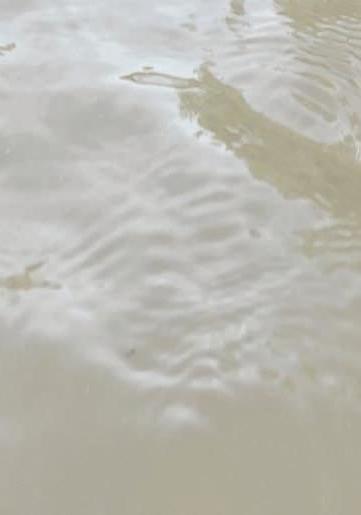
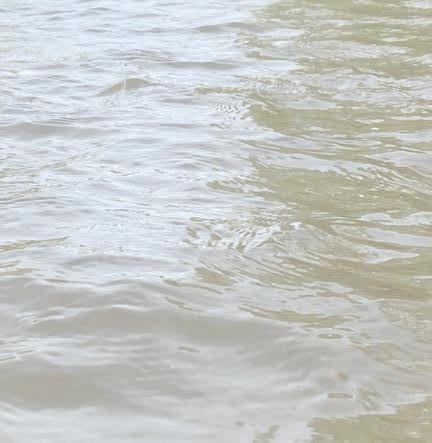
Sara Carmichael Hired As Watershed Coordinator

A new position to Story County, the Watershed Coordinator will coordinate water quality improvements in Story County as directed by the Watershed Assessment Working Group.
Sara believes in the power of coalition building and environmental education. She comes with over 13 years of experience in the water quality field, first finding her passion for water resource education through an AmeriCorps position in Tennessee. Most recently, Carmichael worked as the Executive Director for Iowa Rivers Revival where she expanded educational, recreational, and partnership opportunities for all Iowans.
An understanding of the importance of a healthy environment is core to who Sara is, enhanced by knowledge of watershed issues facing the state of Iowa and Story County specifically. She believes all people deserve access to clean water, protected drinking water sources, and safe recreational opportunities.
When she is not exploring Iowa’s land and water trails, she enjoys cooking and baking, traveling, making homemade margaritas, taking her cat Zachary Binx on walks, biking to breweries, and trying to find the best dirty chai latte in Iowa (any recommendations are appreciated).
Connect Kids to Nature
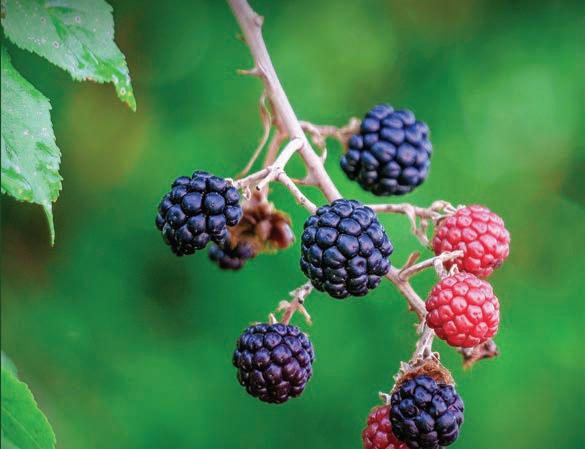
Through Food

Jess Lancial
Take a drive through my Ames neighborhood, and you will likely witness a dozen children in my yard following me around like a Pied Piper. None of these kids actually belong to me. They visit only for VEGETABLES and wild foods! Yes, you read that correctly. The neighborhood kids make daily journeys to my house to ask to eat vegetables, nuts, and flowers. Kids as young as three can be found in my lawn (unsprayed of course) eagerly plucking the flower heads off dandelions and violets, which we will later turn to jelly. In early spring, you can find them digging in the dirt and pulling weeds to help prepare my garden beds. In the fall, you will find them seated on the sidewalk cracking open nuts with a hammer (a chore I despise, but the kids tell me “this is more fun than video games!”). I love watching the kids’ excitement (the free help is nice too), and the parents love that their kids are outside learning, off their screens, and excited to try natural and healthy foods. There is no special secret to getting kids excited about growing, searching for, and eating wild foods; the curiosity is innate. Teaching kids to gather food helps connect them to nature. Here are just a few examples:
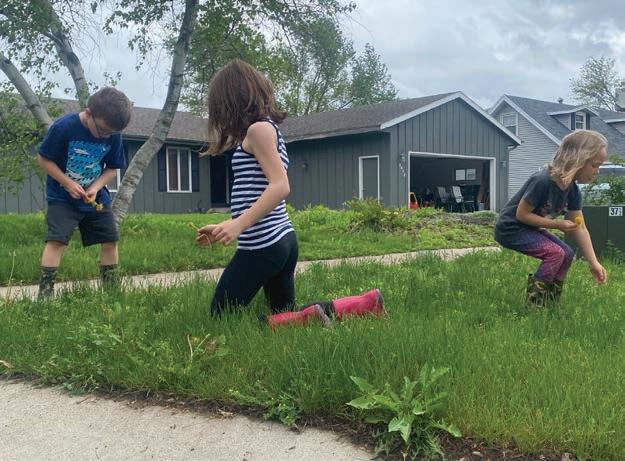
Fosters a better understanding of the world around us
Ask kids where food comes from and most will say, “the grocery store.” Ask them what that slice of carrot means to them and many will have no connection to it at all. When they spend time growing their food from seed or scouring the woods for a wild edible, they are invested in the process and a story is created. Kids will remember seeing a seed turn into a sprout, then making a flower, and eventually watching an entire tomato grow and ripen. Once kids have put their time, energy, and sweat into the process, they are able to appreciate the work involved to create the food on their plate. They are more likely to want to be involved in not only growing or collecting food, but also the preparation, cooking, and most importantly the EATING of that food!
Increases observational skills and mindfulness, and creates future stewards for natural places
Foraging is like an edible scavenger hunt, and what kid doesn’t like a scavenger hunt? Kids learn to center their focus on searching for shape, colors, and smells. They begin distinguishing that not all green plants around
them are the same and instead start discovering the different shapes of the leaves and the number of petals on each flower. You now have unintentionally engaged your child in learning how to be mindful in nature. Spending time and being more present in nature has been shown to improve negative moods and decrease stress and anxiety. The more present we are in nature, the more emotionally connected we feel to nature. When we connect with nature, we are more likely to care about what happens to the places we are attached to and even more likely to take action in protecting those spaces.
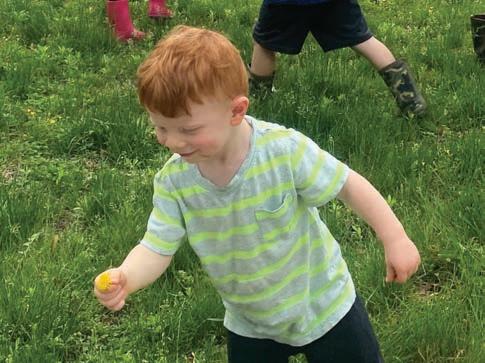
Helps kids become more place- and time-aware
Foraging and gardening tunes kids into the natural changes around them. They learn to mark the seasons by the foods they discover: early spring is for nettles and sweet peas, summer is for raspberries, and fall is for squash, apples, and nuts. They can keep an observation journal of the foods they discover and when and where they found them. They begin to notice that they find more mushrooms after a rain or the green beans grow better in full sun. There is no better way to learn your surroundings and establish a sense of place than discovery through smell, sight, touch, and taste.
Lastly, it’s fun!
I’m sure many of you reading this now can think back to a time as a child and the joy you felt having purple-stained fingers from plucking a ripe mulberry from a tree, or collecting black raspberries to turn into a pie with grandma. Searching for and gathering food is always an exciting adventure, as you are never certain of what you will come across.
With a willingness to explore and do some research, you too can have your family engaged in a year-round activity that gets everyone outside and reconnecting to nature.
1) To get your kids interested in gardening, grab a packet of seeds, a pot with soil, and some sunlight and you are ready to get started! I recommend easy fast growing vegetables like lettuce or cherry tomatoes.
